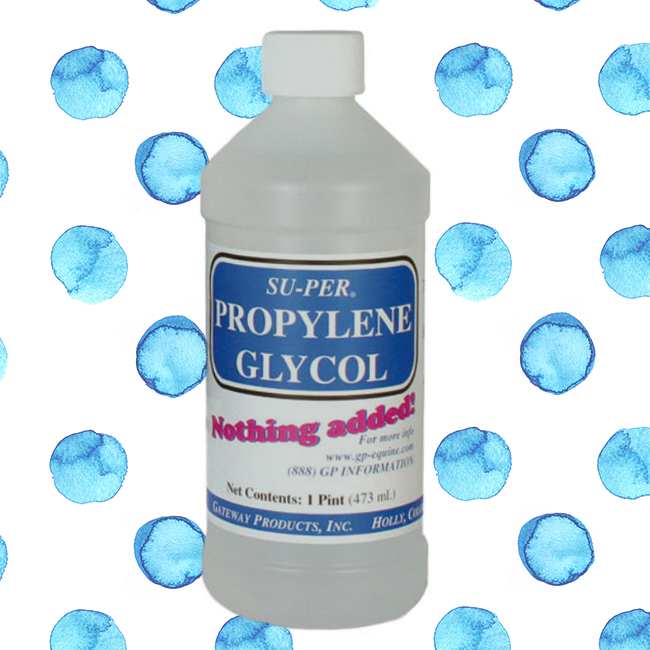I’ll admit, when I first heard of e-cigarettes a few years back, I was naturally intrigued, yet skeptical too. One of the main sources of my skepticism had to do with the fact that one of the main ingredients of the nicotine e-liquid was propylene glycol or PG.
My initial reaction was of alarm and bemusement at how inhaling a substance containing PG could not be harmful.
Part of the negative conception regarding propylene glycol is yes, it is an ingredient found in antifreeze (…more background on that later). PG though is found in many things we use every day. I could list literally hundreds of them – from prepared foods to cosmetics to fog machines to inhalers for people with asthma, COPD, lung disease, and other respiratory ailments. The substance is also found in IV meds among other things.
In short, PG is safe for humans to inhale.
Personally, I was convinced of this since many with asthma use an inhaler daily. Propylene glycol itself is a relatively simple chemical substance containing carbon, hydrogen, and oxygen – C3H8O2 or HO-CH2-CHOH-CH3
Discovered in 1942 and approved for use around 1950, many studies have been commissioned to study the effects of PG. One study commissioned by Time Magazine used monkeys to determine the impacts of the substance. No negative effects were discovered except for one group of monkeys who gained weight after inhaling heavy concentrations of PG.
Another study took place over a 3-year period in a pediatric hospital. Rather than using tri-ethylene glycol in the facility’s air filters, PG was used. Concurrently, respiratory infections in the hospital dropped from 132 cases to 13.
The U.S. Centers for Disease classifies PG as ‘GRAS’ – or “generally recognized as safe” as a food additive.
Why do so many think PG is harmful?
It’s hard to say. Some people, including myself, were confused between propylene glycol and ethylene glycol, which is most definitely a toxic substance.
Up until recent decades, all antifreeze contained EG rather than PG. EG was known to be very dangerous to pets and small children since it made antifreeze smell real sweet. Pets and unsupervised kids could smell it and ingest the substance. Needless to say, the outcome most of the time was really tragic.
Today though, antifreeze contains PG and doesn’t give off the inviting smell.
In the end, unawareness is what drives much of the negative perception of propylene glycol. Countless studies though have shown that only in very large quantities does it make any noticeable impact in people.
Take a look at this video courtesy of VapeTalk on the safety of propylene glycol. If someone ask you about the safety of your Sidesho or Lux e-cigarette and has concern over PG specifically, be sure to direct them here or kindly explain it’s a common substance in numerous everyday items.



